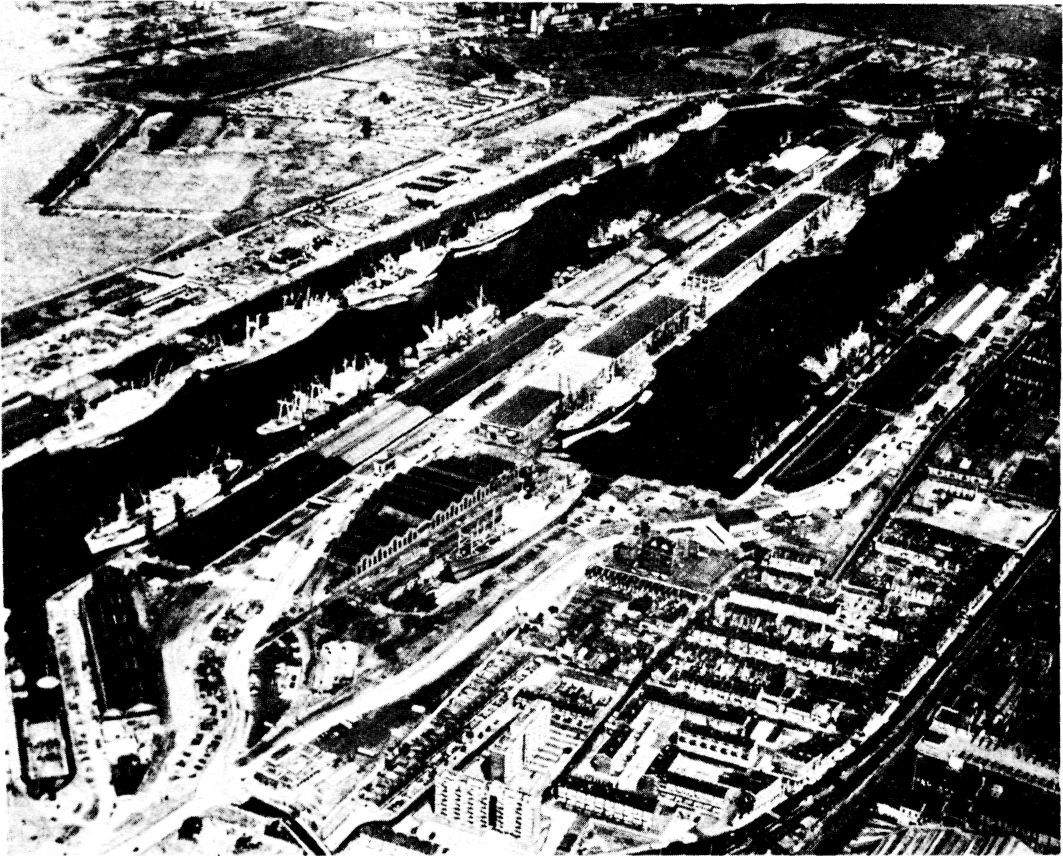
- •Contents
- •Unit I water
- •Text 1a water in human life
- •Text 1b
- •Text 1c
- •Unit II ports
- •Text 2a
- •Text 2b
- •Text 2c
- •Unit III world shipping
- •Text 3a
- •Text 3b
- •Text 3c
- •Unit IV water ecology
- •Vocabulary.
- •Text 4a
- •Text 4b
- •Text 4c
- •Unit V early history of shipbuilding
- •Vocabulary:
- •Text 5a
- •Text 5b
- •Text 5c
- •Unit VI full-riggers
- •Text 6a
- •Text 6b
- •Text 6c
- •Unit VII steam power
- •Text 7b
- •Text 7c
- •Unit VIII great britain as a sea-faring nation
- •Text 8a
- •Text 8b
- •Text 8c
- •Supplemantary texts
- •Abbreviations
- •Geographical and proper names
- •Vocabulary
Text 2c
LONDON PORT
L

London is a place rich in history, and much of it is closely related to the river Thames that runs through the heart of the city. In fact, the earliest settlement was a direct result of the need for a convenient ford across the river. Over the centuries, the Thames has ensured London’s importance as a trading centre. Yet in Roman times London became Britain’s leading port and links were established with the rest of the Roman Empire. Because of its importance, London assumed political and administrative functions and, after the Norman Conquest it emerged as the capital of England.
The river Thames flows right through the capital, connecting many important and contrasting areas relevant to London’s past, its present and its future. For centuries, the river has been central to London’s development as a capital city, a source of progress and prosperity for its people. Of course, the city has also from time to time proved rather tempting to invaders. The Vikings from the 9th to the 11th centuries were among those who had attacked London from the water.
Today, the port of London, which handles some 50 million tons of cargo, is situated in the middle of the biggest manufacturing and consumption centre in the UK, the prosperous South East. Its geographical position fitted London to be the chief link of the United Kingdom with the outside world.
Most of the British ports are situated in the mouths, wide estuaries of rivers and London is not an exception. Of great importance for the port activity are tides when the rising water reaches the maximum mark of 6 metres in the lower Thames. So one of the great advantages of the port, because of its high tides, has been the ability of the vessels to sail up the estuary into the heart of the city.
London takes upon itself the largest part of the country’s overseas trade. From 5 to 10 per cent of the exports and 15-20 per cent of imports (by tonnage) pass through the port of London. As ocean-going ships today are generally much larger than they used to be, though fewer in number, the ports and harbours have to be adapted accordingly. In London trade, having undergone the ‘container revolution’ was generally transferred farther down river, out of sight to the average Londoner. For example, Tilbury Docks, 40 km below London Bridge, opened in 1886, formerly the main passenger port for London, was due for dock expansion, and new berths were constructed which could handle container ships.
The change has been so swift and so complete that it is hard to imagine that only 50 years ago the river was busy with steam tugs, sailing barges and other craft, both great and small.
Ex. 17. Combine the information from the unit and speak on the topic: “London as One of the Largest World Ports”.
